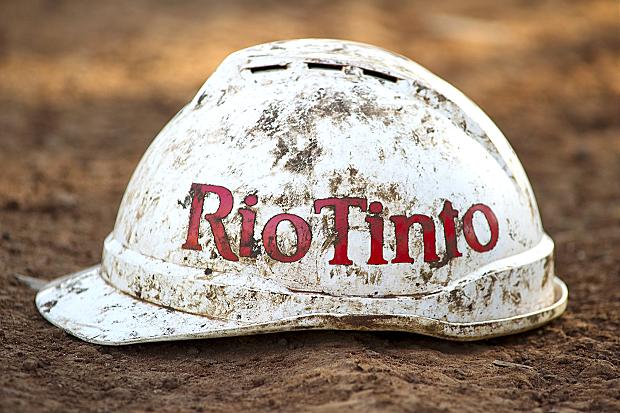Will Rio Tinto cut its dividend?

Rio Tinto (RIO) at 1724p, after the annual production figures. Could the market be considerably under-valuing Rio Tinto because it is too bearish about its cash position? I explain here why that may be the case.
The Rio Tinto (RIO) share price (1724p last seen) gives a historic annual dividend yield of around 8.7% (at the current pound/dollar exchange rate of $1.44 to the pound). Rio does its accounting in dollars. In accordance with convention, that kind of super normal dividend yield implies a dividend cut which usually, but not always of course, choreographs with an improvement in the share price. The company is clearly preoccupied with costs according to the news of cost cutting and the sale of assets. This week it was confirmed that the company is to sell (subject to conditions) its coking coal asset Mount Pleasant, New South Wales, for a stated $830 million, which, added to disinvestments since January 2013, will take the total value of disposals to over $5 billion.
However, the company is at the same time planning to increase its capital expenditure on big efficient mines elsewhere. Most notably, the extension of the Mongolian copper mine Oyu Tolgoi underground with $4.4 billion dollars of syndicated loan finance that will have to be serviced. There is also what is described as the prime Amrun Bauxite development which will take another $1.9 billion of project finance.
So the picture of Rio Tinto as the company stripping out billions of dollars of costs and now, non strategic assets, has to be adjusted by thoughts about the costs related to expansion elsewhere. Against the background of weak iron ore, copper and coking coal commodity prices and geo political worries generally, the Rio Tinto share price has massively underperformed the FTSE100 Index in the last six months, falling by near 30% during a period when the market went down by only 11%. That fall crystallises concerns that the dividend may come under financial pressure as its cost competes with the cost of financing the project finance of these new investments. So the question now is will the Rio dividend will be cut – clearly the market thinks it will – with the current historic dividend now at 8.6%? That is clearly too high a dividend at which to sell these shares, if for no other reason than the fact that the cutting of such high dividends is usually taken by the market as a confidence indicator, leading to an improvement in the share price for that reason.
Before considering the dividend outlook further, it is worth noting that this month’s production statement for the fourth quarter of 2015 and the year as a whole looks better than circumstances might suggest. I add that the statement gives volume details and not financial data, which will come in due course – with the publication of the annual report and accounting for last year.
Because of Pilbara coming more fully on stream, the shipment and production figures for iron ore are notably impressive. For the whole of 2015 iron ore shipment and production rose eleven per cent in volume terms. The price might have fallen dramatically, but that is at least partly compensated for by the company selling more of it in 2015 than in 2014.
With the exception of copper and titanium dioxide slag, all categories of production demand performed positively in 2015: bauxite plus four per cent; aluminium plus one per cent; hard coking coal plus 11%. Semi soft thermal coal production was the same as a year before, whilst the relatively small in size titanium dioxide slag saw production fall by a quarter.
In short, Rio Tinto demonstrated efficiency across many segments of shipment and production, which justifies a relatively bullish view of the company’s operations, even markets like these.
Returning to the question of the dividend, it is worth remembering that according to the last balance sheet dated 30th June 2015, the company had a strong cash position. Operating cash flow was $4.4 billion despite the fact that that the then statutory net income figures was down more than eighty per cent from the net profit figure published a year earlier. So although earnings were down by more than eighty per cent, operating cash flow was down by less than a quarter of that figure. A principle reason being that that the depreciation charge had risen by 2% to $2.3 billion – an amount almost three times the published net profit figure.
The depreciation charge alone was more than enough to pay the dividend of $2.1 billion. It constituted a reliable 52% of total operating cash flow in the last June balance sheet. The total operating cash flow figure of $4.4 billion almost covered capital expenditure and the cost of dividends at $4.6 billion. Most significantly, quarter-end cash on 30th June was $11 billion – despite everything, 16.5% higher than a year earlier.
I do not take a cut in the Rio dividend for granted. There are two reasons for considering a purchase of RIO shares at this low level: first, that the dividend will not be cut (in which case the shares are cheap); or that there might be such a cut, which is already discounted, prompting the shares to rise on relief, in which case the shares are also cheap.
I cannot see the future and do not know what might or might not have been said by the company to analysts. But I am one who thinks there is a strong chance that the dividend will not be cut. The shares are selling at only 2.8 times last balance sheet cash or on my estimate around 600p a share. The market consensus estimates are that the annual dividend will rise a little (by a postulated 2.2%) this year to give a prospective estimated dividend yield of 8.8%. There seems to be a discrepancy between the analysts and the market in general.
Comments (0)